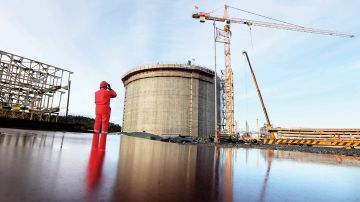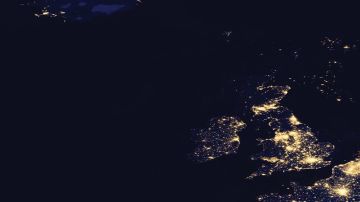THE North Atlantic is not a place for the fainthearted.
It is a potentially hostile environment for any ship, let alone one that is carrying liquid ethane.
INEOS knew that – and that is why it turned to Evergas, a world leader in gas transportation.
On the surface, INEOS’ brief was simple. It needed a ship that would be capable of transporting huge quantities of liquefied ethane gas at -90°C more than 1,000 miles across a deep, cold ocean, plagued by icebergs, dense fog, 50ft waves and severe storms. And it had to do it more efficiently than had been ever done before.
The answer was anything but simple. But the result was the largest, most flexible, environmentally sustainable, multi-gas carrier ever built.
“There is not a ship like this in the world,” said Hans Weverbergh, Operations Manager at Danish shipping company Evergas. “There were no ships that had pressurised tanks that could carry this amount of ethane. It was something that had never been done before.”
Liquid natural gas has been shipped around the world for decades. Ethane though is a different matter. It had only ever been shipped in small vessels on short routes. Crossing the Atlantic would need much bigger boats. Other companies felt it simply wasn’t viable. But INEOS saw the opportunity and had the vision to make it happen.
“These vessels are truly unique,” said Evergas CEO Steffen Jacobsen who has worked in the shipping industry for 35 years. “No-one has ever tried to ship ethane in these quantities and over this distance before. To do this, we have had to invent completely new ways of doing things.”
INEOS wanted the ‘Dragon Ships’ to be able to be powered by the cargo it was carrying.
For that it turned to Finnish company Wärtsilä, which set a new standard in fuel flexibility. It designed dual-fuel engines which were capable of seamlessly switching between liquefied natural gas, ethane, light fuel oil or heavy fuel oil without any loss of power.
“It was a technological breakthrough,” said Timo Koponen, Vice President, Flow and Gas Solutions, Wärtsilä Marine Solutions.
If INEOS’ engines run on ethane, there will not only be more room for cargo, but the vessels will produce 25% less CO2, 99% less sulphur dioxide and meet the International Maritime Organisation’s Tier III regulations.
Each ship is also equipped with two engines to ensure the cargo gets through no matter what.
The ships are the biggest ever designed of its kind. In layman’s terms each is the length of two football pitches and if you removed the cargo tanks, could hold 5,750 Mini Cooper cars.
The tanks are located in the hull of each vessel, and each is capable of holding 11 swimming pools’ worth of liquefied ethane.
HSVA, the German-based hull design specialists employed to maximise the efficiency of these immense vessels, tested scale models of the ships in realistic environments.
The first two ships were built in a dry dock in Qidong, near Shanghai, by Sinopacific Offshore and Engineering, one of the biggest shipbuilders in the world.
“SOE is one of very few companies that had the skills and construction facilities to take on the building of these massively complex vessels,” said CEO/Chairman Simon Liang.
“When I actually saw those first two ships nose to nose at the dock, I thought ‘Man, these guys know what they’re doing’,” said Chad Stephens, Range Resources’ Senior Vice President of Corporate Development, who was invited to the naming ceremony.
It was a momentous moment too for Evergas.
“I felt so proud of all the people involved both internally and externally, all of whom had brought these vessels to life,” said Steffen.
The naming ceremony marked another landmark in INEOS’ $2 billion global project to bring shale gas from the USA to its manufacturing plants in Norway and Scotland.
INEOS is the first company in the world to opt to ship shale-gas derived ethane from America where the gas has led to a manufacturing renaissance.
















